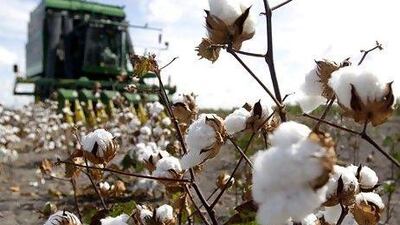Cotton has failed to perform, with prices falling by 37 per cent over the past 30 days, even as yields are expected to be affected by hot weather and drought this summer in the US.
"The decline in prices has been sustained despite even hotter weather in the southern plains of the US, and in Texas in particular, which has experienced exceptional drought," said Abah Ofon, an analyst at Standard Chartered's commodity research team in Singapore.
The US is the top exporter of cotton, and Texas accounts for about 50 per cent of US output. According to US agriculture department reports, producers intended to plant about 5.5 million hectares of cotton this year - the most in five years and up 25 per cent year-on-year. However, optimism on US cotton plantings has been slashed. A record 30 per cent of crops is now expected to be abandoned because of the dry weather.
Despite tighter crop yields, cotton prices have reacted sharply due to the recovery in global output, particularly in China. "China is the top destination for world cotton and typically accounts for over 30 per cent of imports," Mr Ofon said.
According to the US forecasts, China will produce about 33 million bales of cotton, up 8 per cent year on year, owing to area and yield improvements.
Mr Ofon lowered his forecast for this year for number 2 cotton, traded on London's ICE Futures Europe exchange, to 146 US cents per pound from 162 cents per pound previously.
Moreover, India, the world's second-largest cotton shipper, lifted restrictions on overseas sales of raw cotton on Sunday.
"In isolation, the Indian story is certainly bearish for prices. Considering the fact that we have relatively lacklustre global demand," Luke Mathews, a commodity strategist at Commonwealth Bank of Australia told Bloomberg.
India is likely to increase its output by 10 per cent, Mr Ofon said, bringing global cotton output up by 7.4 per cent in the 2011-12 season. Recent demand has also been relatively weak, as competitively priced synthetic fibres provide a suitable and cheaper alternative option for traders.

